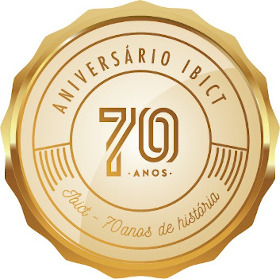Classificações facetadas
DOI:
https://doi.org/10.18225/ci.inf.v1i2.10Keywords:
Classificações.facetadasAbstract
O rápido crescimento dos registros gráficos, o aparecimento de novas formas de publicação e a super-especialização das coleções bibliográficas exigiram o uso de novas técnicas para pronta recuperação das informações contidas nos documentos. Dentre todas as linguagens existentes, a classificação ainda é considerada a melhor por assegurar também uma arrumação lógica dos assuntos dentro de uma coleção. A necessidade de se considerar um documento, não apenas por seu aspecto físico mas também por seu conteúdo — simples ou complexo — levou os estudiosos a desenvolver a teoria de Ranganathan (divisão de um assunto por seus múltiplos aspectos ou facetas). Para tal fim, foi criado na Inglaterra, em 1952, o "Classifícation Research Group", cujo trabalho vem despertando o interesse geral, por sua fácil aplicação em campos especializados.Em nosso País, esta técnica foi introduzida juntamente com o "Curso de Pós-Graduação em Ciência da Informação", realizado pelo IBBD/UFRJ a partir de 1970. Desde então, alertados para o problema, bibliotecários, documentalistas, técnicos e cientistas da informação vêm procurando maiores detalhes para o processo de organização de tal processo.Esse tipo de linguagem de recuperação exige um trabalho de equipe, além de minucioso conhecimento da área a ser coberta.
Abstract
The rapid growth of the graphic records, the new publication forms and the increasing specialization on the bibliographic collections have required the utilization of new techniques for the immediate retrieval of the information contained in documents. Classification, among all of the existing languages, is still considered the best one since it guarantees a logical subject arrangement within a given collection. The necessity of considering a document not only for its physical presentation but also for its contents — simple or complex — brought up the development, by several experts, of Ranganathan's theory (division of a subject into its several aspects or facets). The "Classification Research Group" was thus created in 1952 in England, and its work has arisen a general interest for purposes of applicability in specialized subjects. In Brazil this new technique was introduced together with the "Postgraduate Course on Information Science", sponsored from 1970 on by IBBD/UFRJ. From there on, brought aware to the subject, librarians, documentalists, technicians and informa-tion scientists have looked for a better understanding of the mechanism underlyng the organ-ization technique of such systems.This kind of retrieval language requires a team work, as well as a detailed knowledge of the subject area to be classified.
Downloads
Downloads
Issue
Section
License
- This publication reserves the right to modify the original, regarding norms, spelling and grammar, in order to maintain the standards of the language, still respecting author writing style;
- The final proofs will not be sent to the authors;
- Published works become Ciência da Informação's property, their second partial or full print being subject to expressed authorization by IBICT's Director;
- The original source of publicaton must be provided at all times;
- The authors are solely responsible fo the views expressed within the article;
- Each author will receive two hard copies of the issue, if made availalbe in print.




























